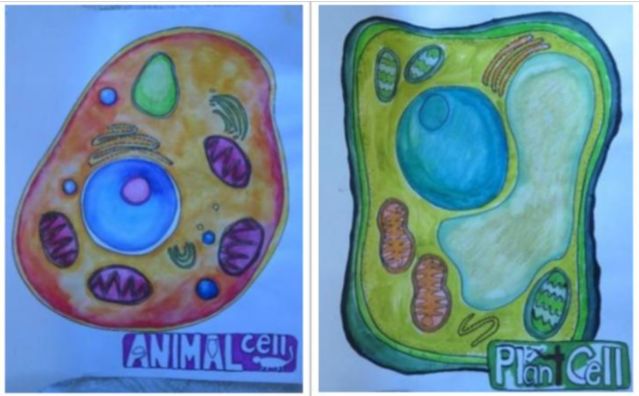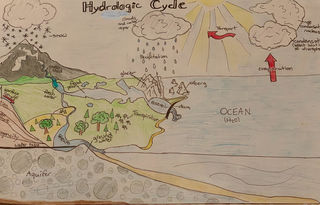Education
Arts-Integrated Pedagogy May Enhance Academic Learning
The arts may help students remember science lessons.
Posted March 5, 2019 Reviewed by Lybi Ma

Fifth-grade students who created some type of art—such as a drawing, writing a rap song, singing a science lesson, or choreographing a dance—that reflected specific classroom lessons, retained science-based knowledge longer than students who didn’t make art in the same class, according to a new study from Johns Hopkins University. These interdisciplinary findings support the benefits of broader arts integration into conventional classrooms.
As a specific example, the researchers found that students who memorized and sang a song with lyrics that held science-based lessons remembered the content much longer and with better detail than most classmates who tried to retain textbook content learned by rote without a song. This paper, “The Effects of Arts-Integrated Instruction on Memory for Science Content,” was recently published in Trends in Neuroscience and Education.
The main goal of this randomized control trial was to determine if an arts-integrated curriculum had any direct impact on learning. The primary focus was on students' long-term memory for science content in astronomy and life science classes or environmental science and chemistry.
Mariale Hardiman from the JHU School of Education was the first author of this study. "Our study provides more evidence that the arts are absolutely needed in schools. I hope the findings can assuage concerns that arts-based lessons won't be as effective in teaching essential skills,” Hardiman said in a statement.
"When we talk about learning, we have to discuss memory. Children forget much of what they learn and teachers often end up reteaching a lot of content from the previous year,” Hardiman added. “Here we're asking, how exactly can we teach them correctly to begin with so they can remember more?”
For this study, Hardiman and colleagues from the School of Education and Center for Talented Youth at Johns Hopkins enlisted 350 students from 16 different classrooms in Baltimore, Maryland. The trial was designed to measure retention of science content using arts-integrated science learning in comparison to conventional science instruction that didn’t incorporate the arts.
During two sessions that lasted between three to four weeks, students were randomly assigned to one arts-integrated science curriculum and one conventional class. Eleven teachers taught both types of classes. Each fifth-grade student rotated through one arts-integrated class and one conventional class.
As the parent of a sixth grader who attends a private K-8 day school that regularly incorporates drawing into science classes, I can corroborate the benefits of arts-integrated pedagogy on academic learning. This week, my daughter spent two days pouring her artistic passion into creating a detailed topographical map (below) of the “Hydrologic Cycle” for a school project due today.

My daughter is lucky. I'm grateful that she's able to attend a day school that reflects the pedagogical philosophy of my alma mater, Hampshire College. When Julia Child’s sister co-founded this K-8 school, their mission was to create a “character-building” learning environment that incorporated the arts and an appreciation for nature into academic lessons. Unfortunately, for many students across the country, budget cuts to arts programs and a lack of appreciation for nature do not reflect these core values.
Notably, the Johns Hopkins researchers found that incorporating the arts into classroom learning was most beneficial to low-achieving students who tended to struggle academically.
This study has some limitations. For example, more research is needed to pinpoint whether the benefits of arts-integrated learning are primarily the result of effective instruction, exposure to the arts in general, specific types of art-based lesson plans, or a combination of these interventions in non-arts-based classroom environments. As a next step, Hardiman plans to work with the researchers and educators involved in this study to fine tune an evidence-based, art-integrated pedagogy that expands on the initial findings of this study.
"Our data suggests that traditional instruction seems to perpetuate the achievement gap for students performing at the lower levels of academic achievement. We also found that students at advanced levels of achievement didn't lose any learning from incorporating arts into classrooms, but potentially gained benefits such as engagement in learning and enhanced thinking dispositions. For these reasons, we would encourage educators to adopt integrating the arts into content instruction," Hardiman concluded.
References
Mariale M. Hardiman, Ranjini Mahind John Bull, Deborah T. Carran, Amy Shelton. "The Effects of Arts-Integrated Instruction on Memory for Science Content." Trends in Neuroscience and Education (First published online: February 7, 2019) DOI: 10.1016/j.tine.2019.02.002


